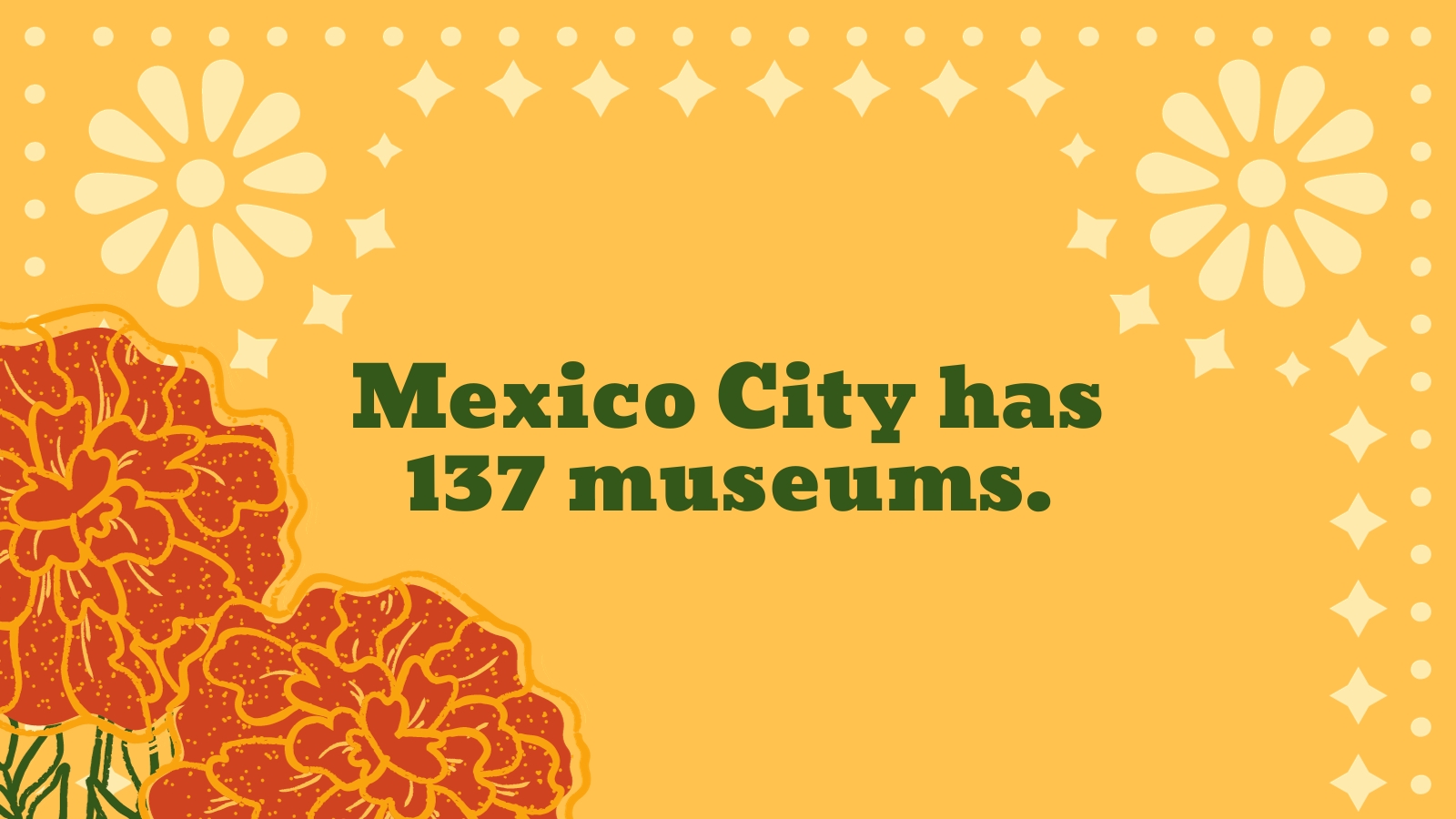There are plenty of interesting and unexpected facts about Mexico that will impress and surprise students. Explore this diverse country one fact at a time.
Facts About Volcanoes in Mexico
1. Mexico is home to a volcano that’s a natural wonder of the world.
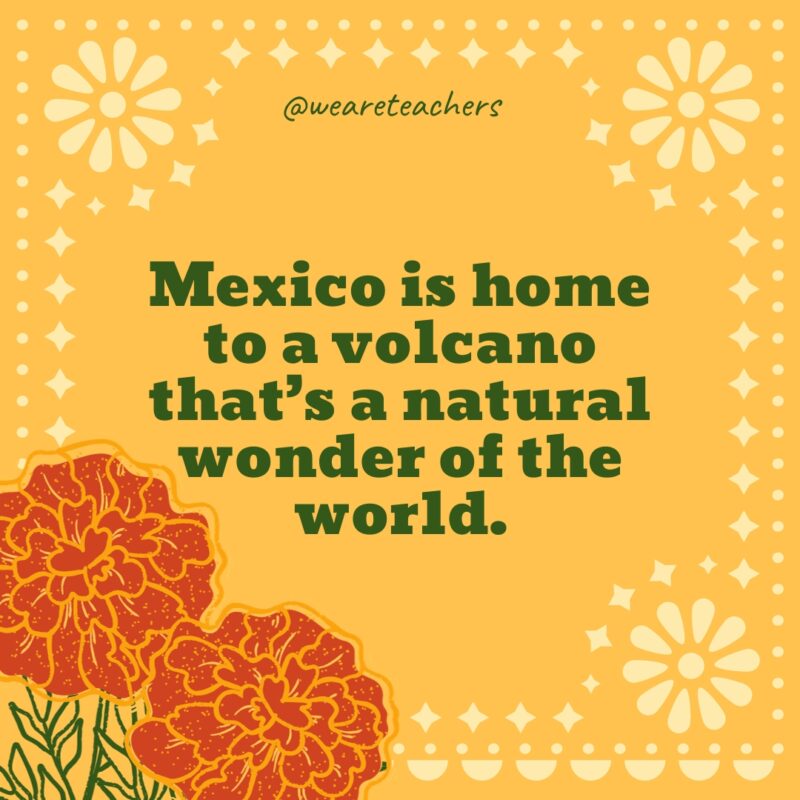
Paricutin is a volcano that’s relatively young. Learn all about it in this video.
2. Mexico has more volcanoes than any other country.
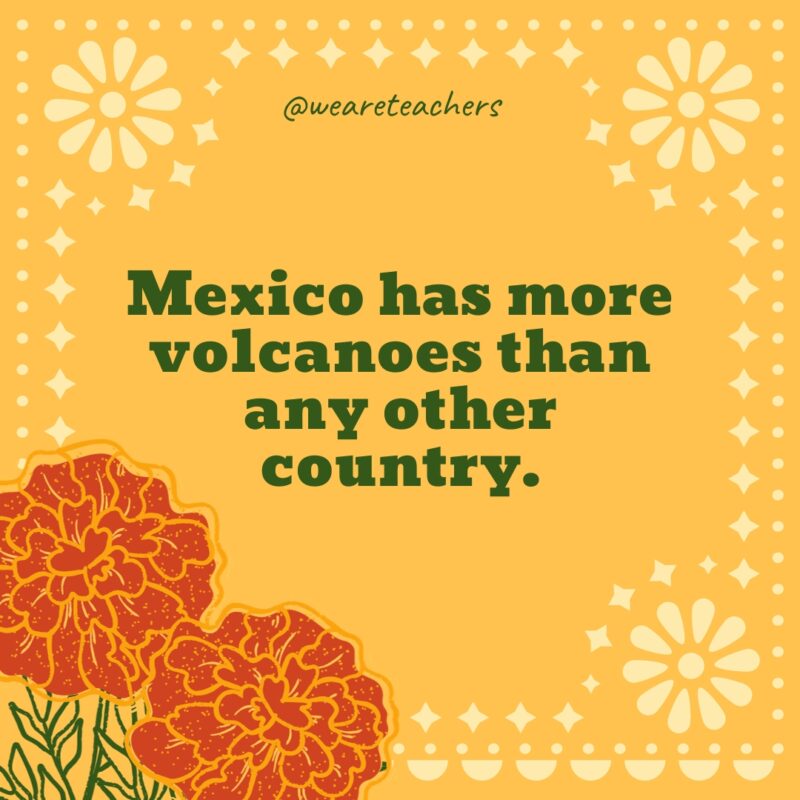
With 200 volcanoes, that’s more than the state of Hawaii or any other country. Only 48 are active. The state of Chiapas has the most volcanoes in Mexico with 5 large and 30 smaller peaks. The most active volcanoes are Popocatépetl, Colima, and El Chichón.
3. Mexico has the world’s smallest volcano.
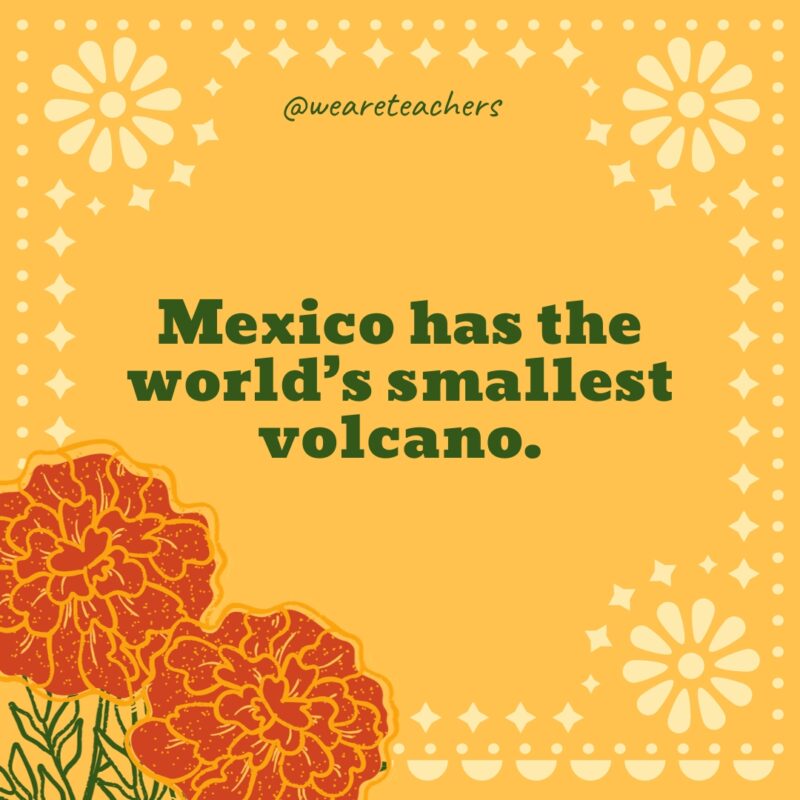
Cuexcomate volcano, outside Puebla City, is 43 feet tall.
4. Mexico is home to the volcano rabbit.
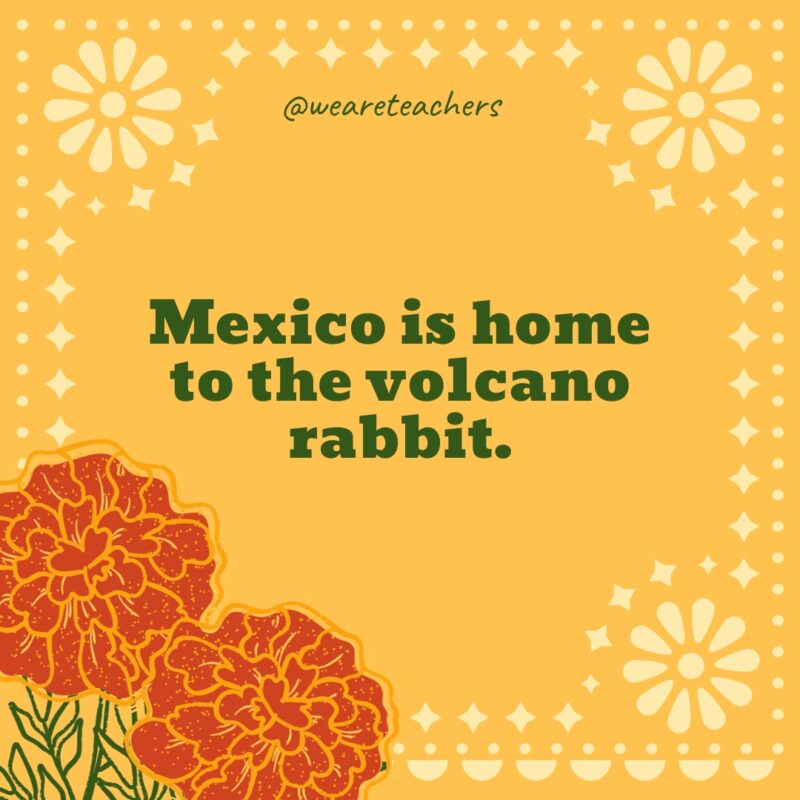
With so many volcanoes, perhaps it’s not surprising that Mexico is home to the rare volcano rabbit. The rabbit lives around the volcanoes and is tiny, only about a pound when fully grown. Read more about the volcano rabbit at National Geographic.
Facts About Animals in Mexico
5. Mexico has the most endangered species in the world.
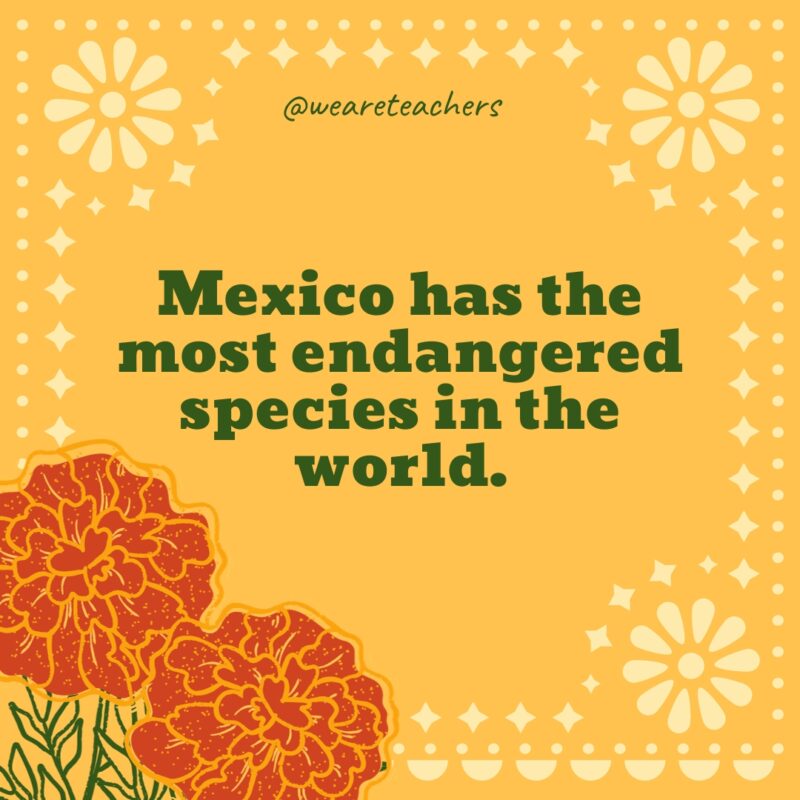
More than 60% of Mexico’s 113 threatened species are classified as endangered. These include the vaquita porpoise, Mexican gray wolf, leatherback sea turtle, and jaguar.
6. Chihuahuas are named for the Mexican state of Chihuahua.
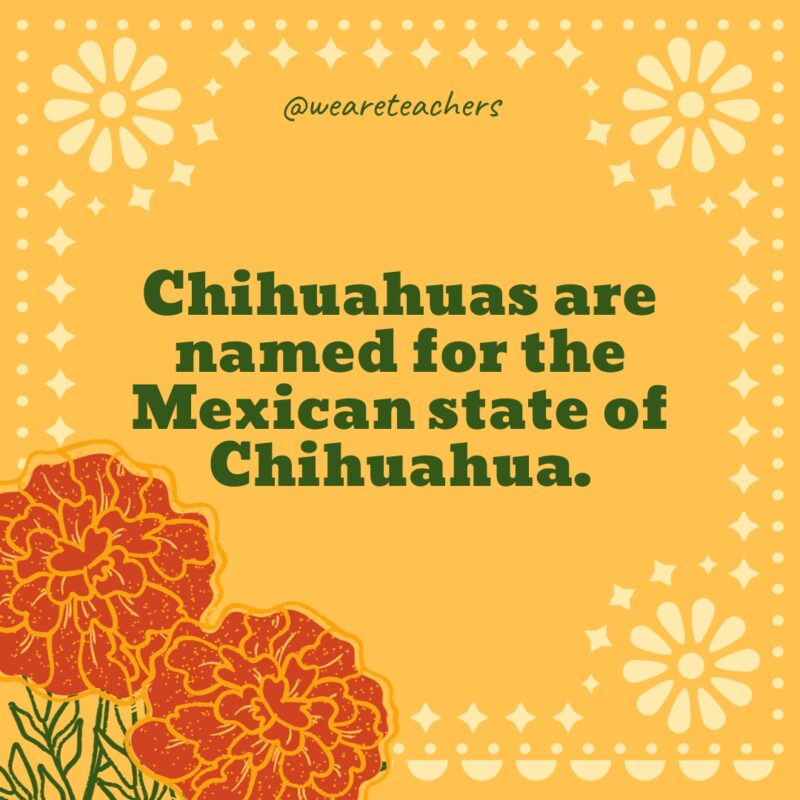
It’s true. In the 1880s, Mexican merchants started selling the small dogs to tourists, who brought them to the United States as pets. People named the dog breed after the region where they’d bought it.
7. Mexico’s national dog is the Xoloitzcuintli.
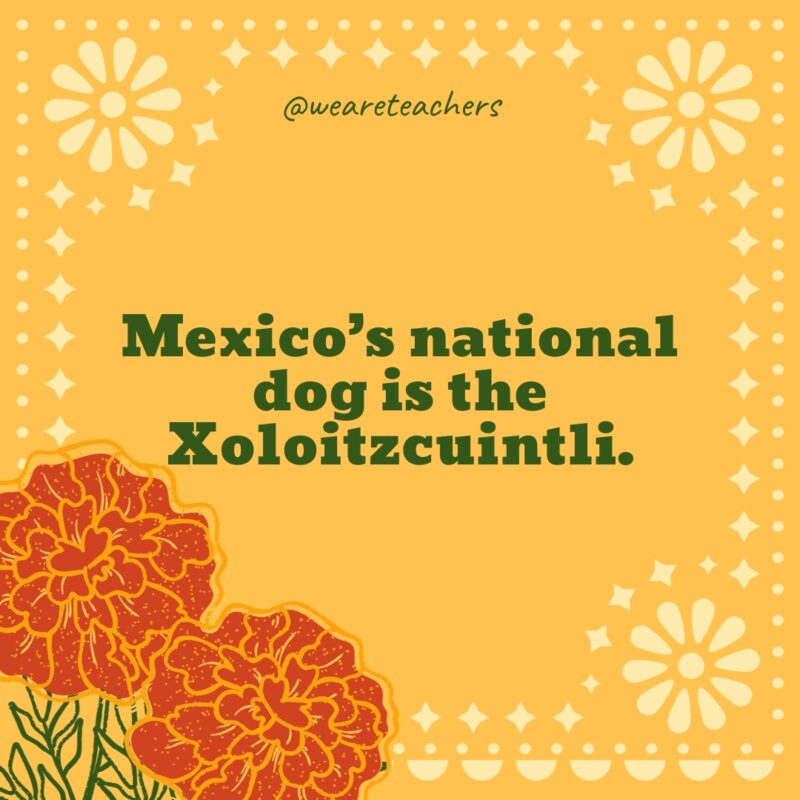
Also known as the Mexican Hairless dog, the Xoloitzcuintli is native to Mexico. Its name comes from the Aztec god of lightning and death, Xolotl, and the Aztec word for dog, itzcuintli. Here’s a video about this weird-looking dog.
8. Mexico has the world’s second-largest coral reef system.
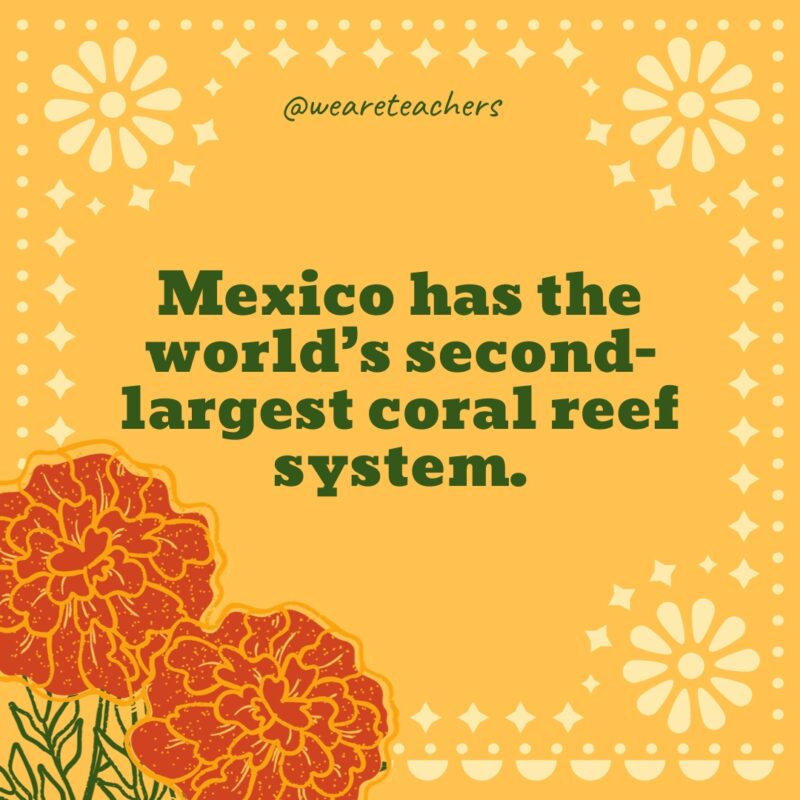
The Mesoamerican Reef is the second-largest coral reef in the world. It’s 600 miles long, starting in Cancun and extending to Guatemala and Belize. Here’s a video of snorkeling in the Mesoamerican Reef.
9. Mexico is the fourth-most biodiverse country in the world.
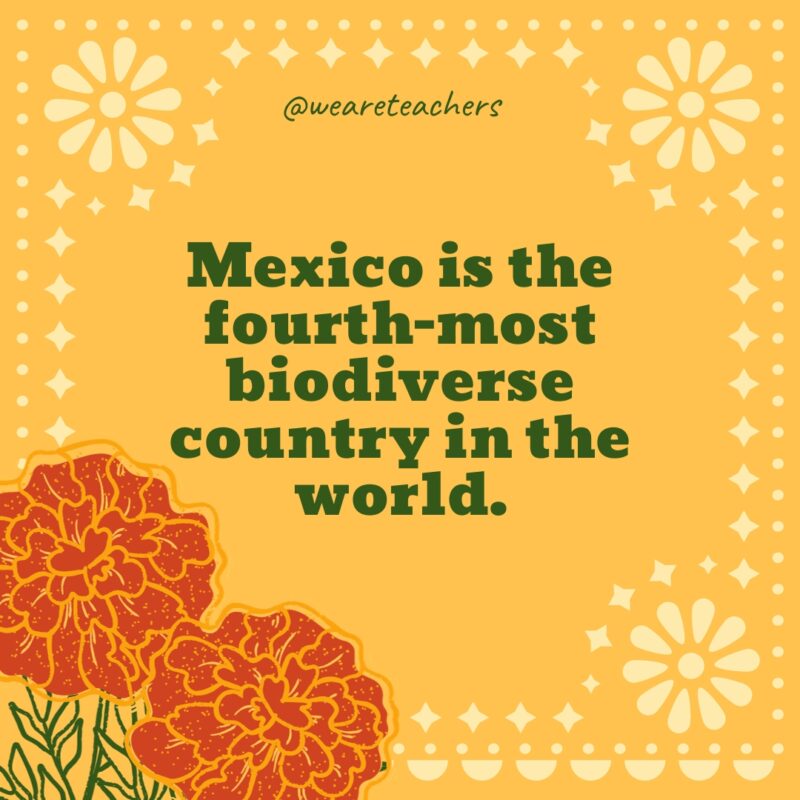
Mexico has about 12% of the world’s biodiversity. Brazil, China, and Ecuador lead it in terms of biodiversity.
10. Millions of butterflies migrate to and from Mexico each year.
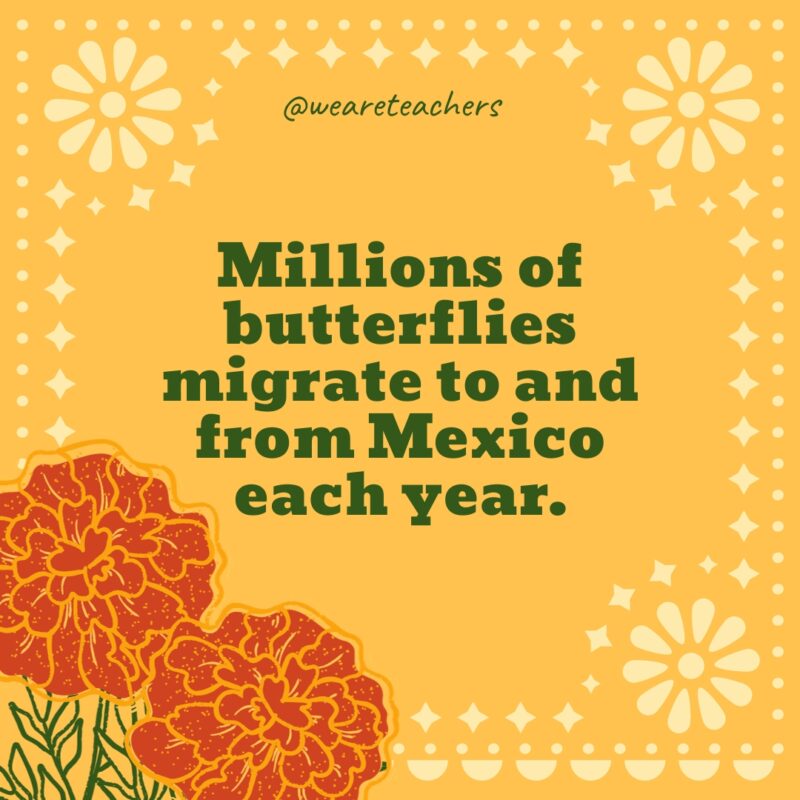
Each November, millions of monarch butterflies travel 3,000 miles from Canada to Mexico and stay in Mexico from November to March. The Mexico Monarch Sanctuary is a UNESCO World Heritage Site. Learn more with this video.
Facts About Pyramids in Mexico
11. Mexico has more pyramids than Egypt.
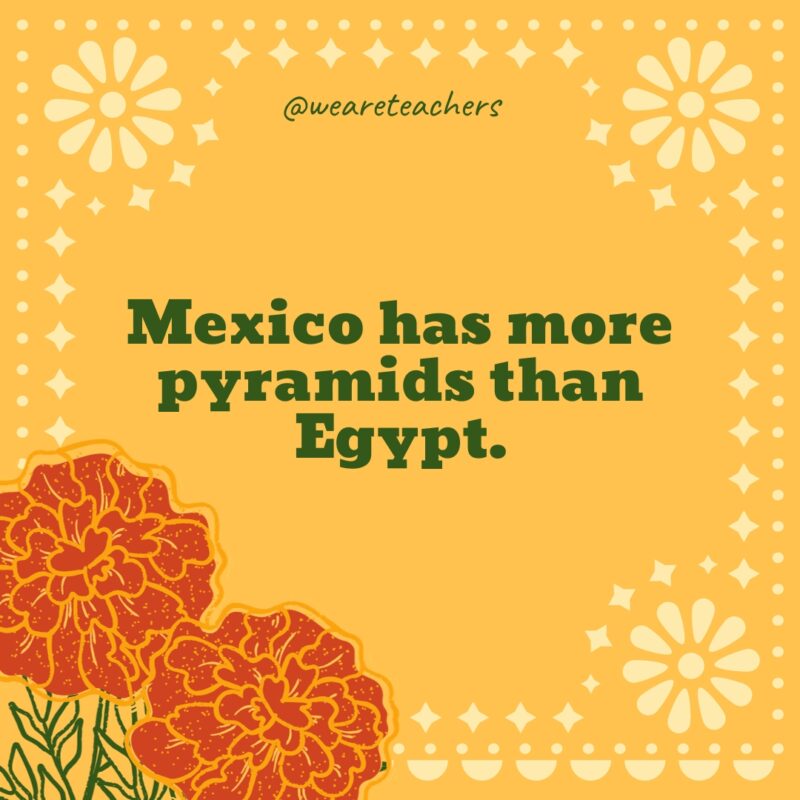
In addition to the largest pyramid, Mexico has more than 60 pyramids, almost twice as many as Egypt. The pyramids were built by the Aztecs and Maya. Here’s a video about the pyramids at Teotihuacan.
12. Mexico is home to the world’s largest pyramid.
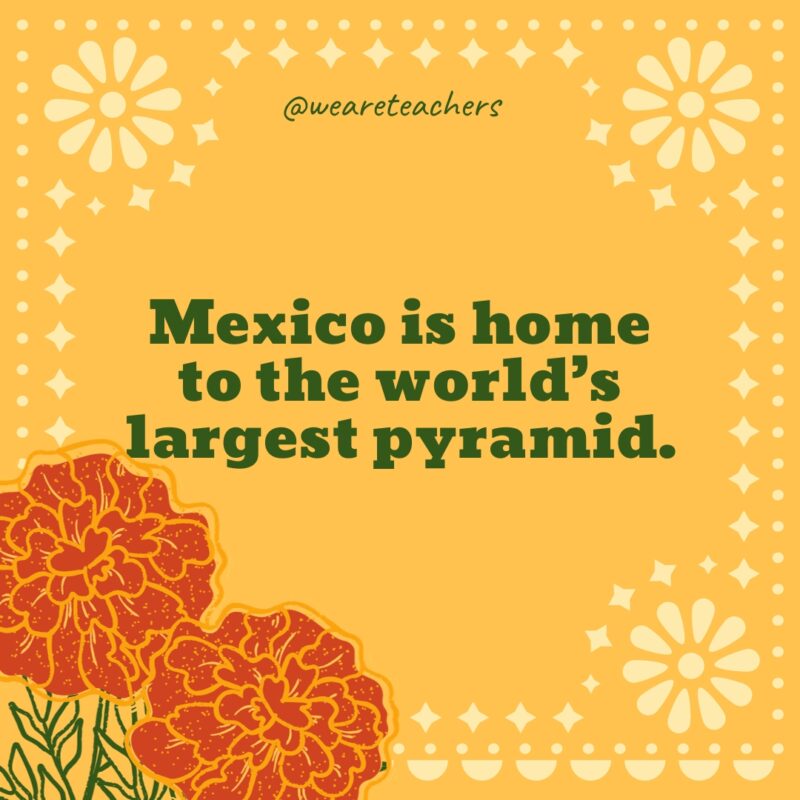
The pyramid of Cholula in the Mexican state of Puebla is the largest pyramid in the world. It’s 66 meters high with a 400-meter base. It’s larger than the Egyptian pyramids, but most of it is hidden by a mountain and a church that was built on top of it. Here’s a video about the pyramid.
Facts About Travel and Famous Places in Mexico
13. Mexico has one of the new seven wonders of the world.
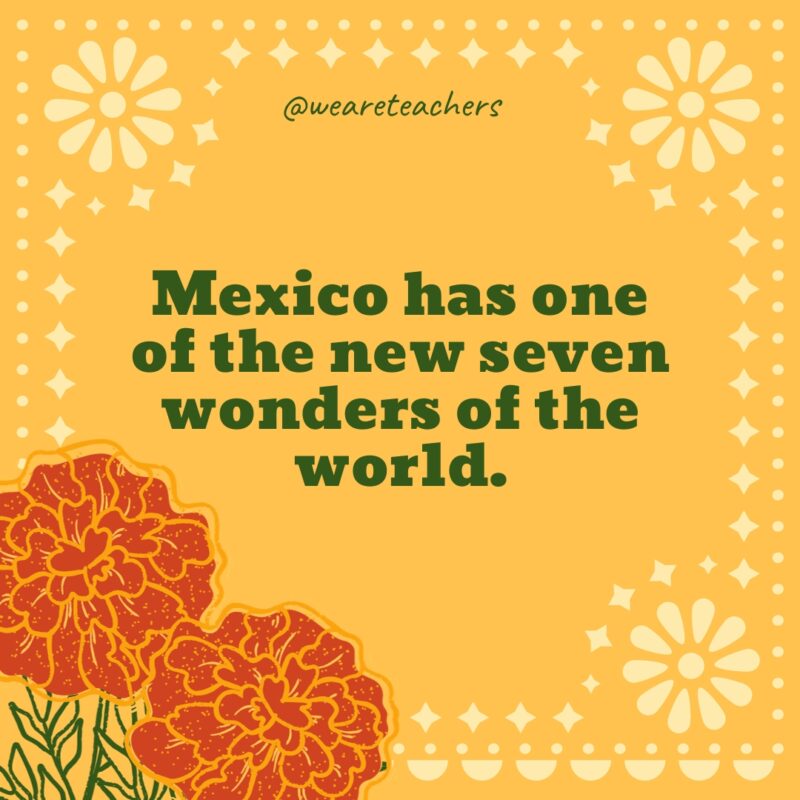
The Temple of Kukulkan at the Chichen Itza ruins in the Yucatan Peninsula is one of the new seven wonders of the world. It’s also one of Mexico’s most visited sites.
Read more: What Are the Seven Wonders of the World?
14. Mexico City is the highest city in Mexico.
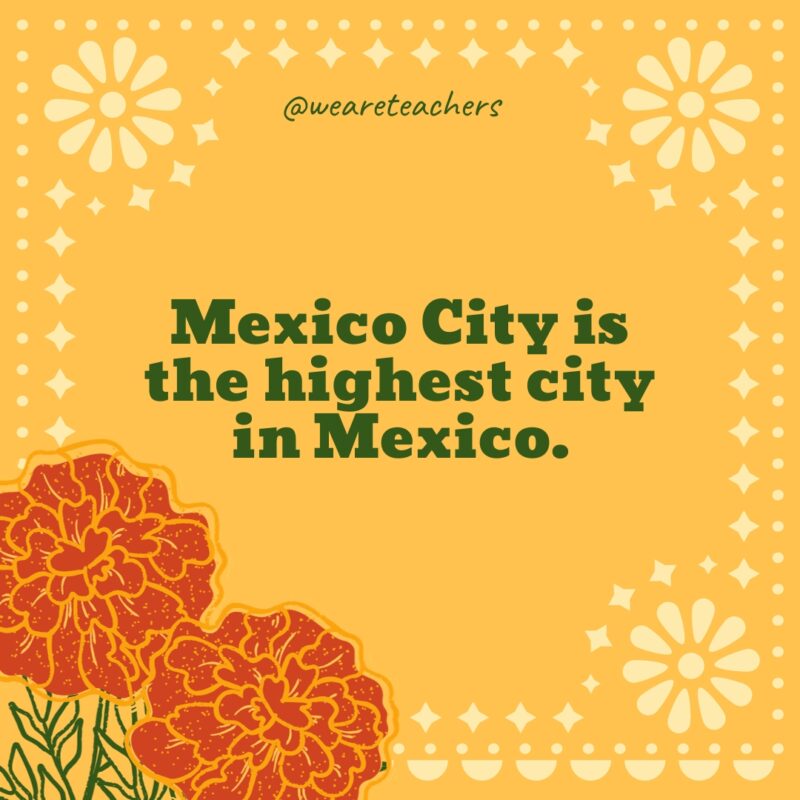
It’s located at 7,350 feet and is the eighth-highest capital on Earth (La Paz, Bolivia, is the highest).
15. Cholula, Mexico, is the oldest city in America.
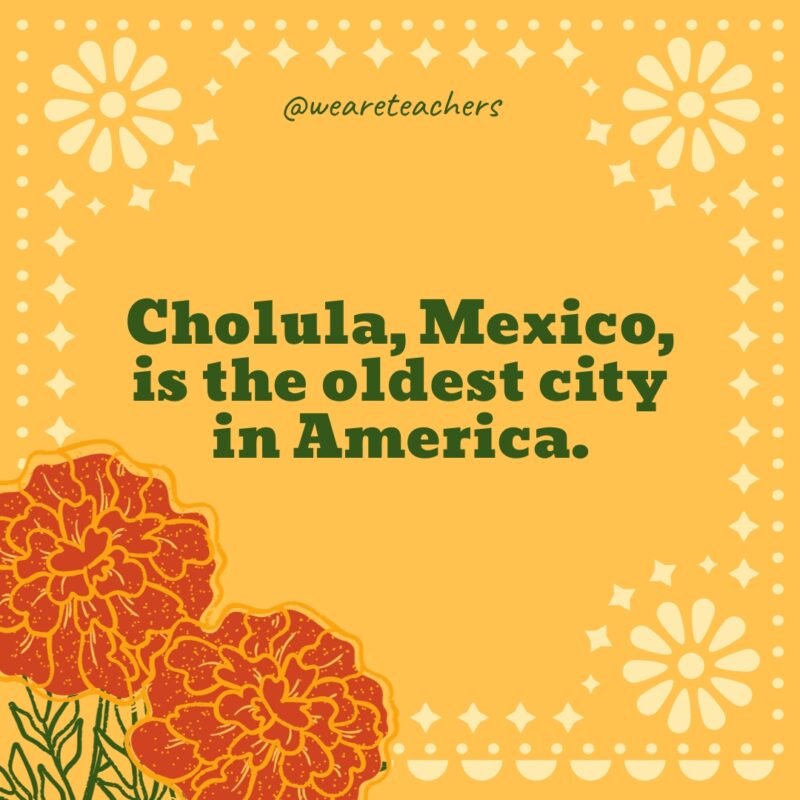
Cholula is thought to have been founded in about 2000 B.C.E. The city is in Puebla State, about 78 miles from Mexico City.
16. Humans have lived in Mexico for at least 22,000 years.
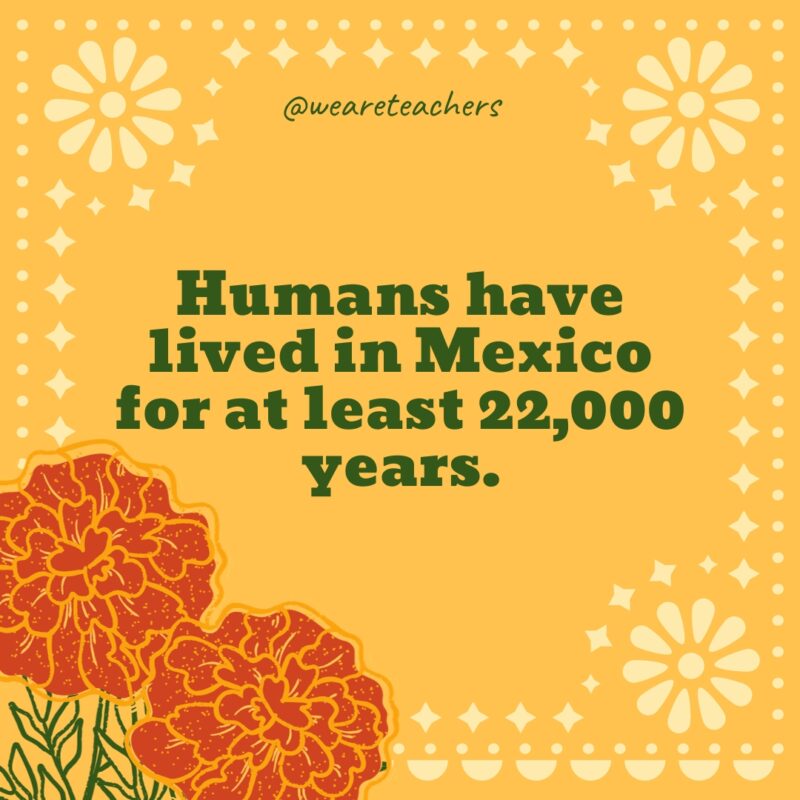
Near Mexico City, the Tlapacoya archaeological site has evidence of humans from more than 22,000 years ago.
17. Mexico has the largest university in the world.
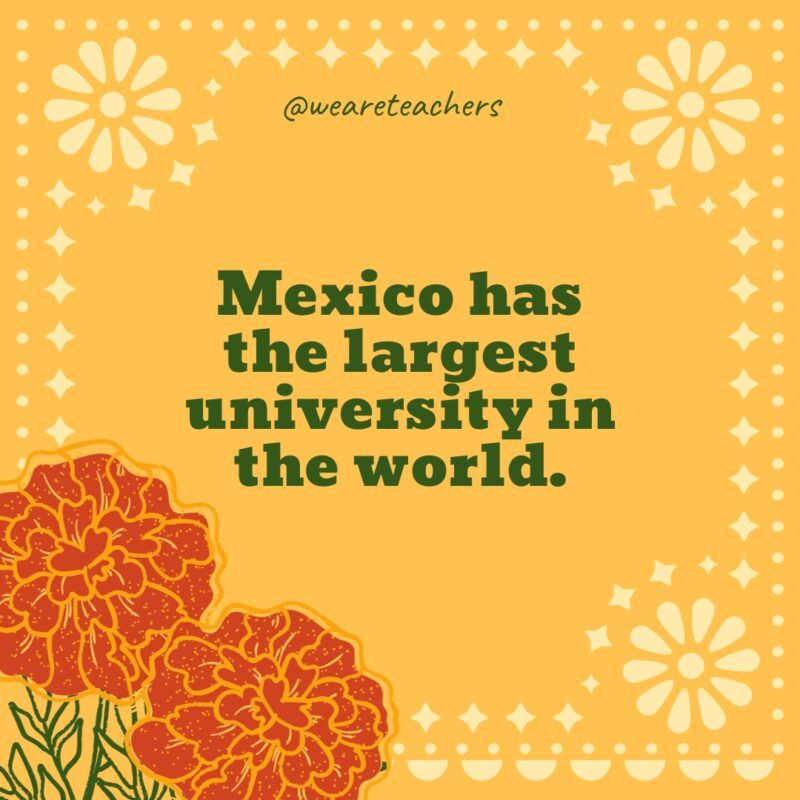
The National University of Mexico, founded by Charles V of Spain in 1551, was founded 85 years before Harvard. Today it’s known as the National Autonomous University of Mexico or UNAM Mexico and is considered one of the best universities in the world.
18. Mexico City has 137 museums.
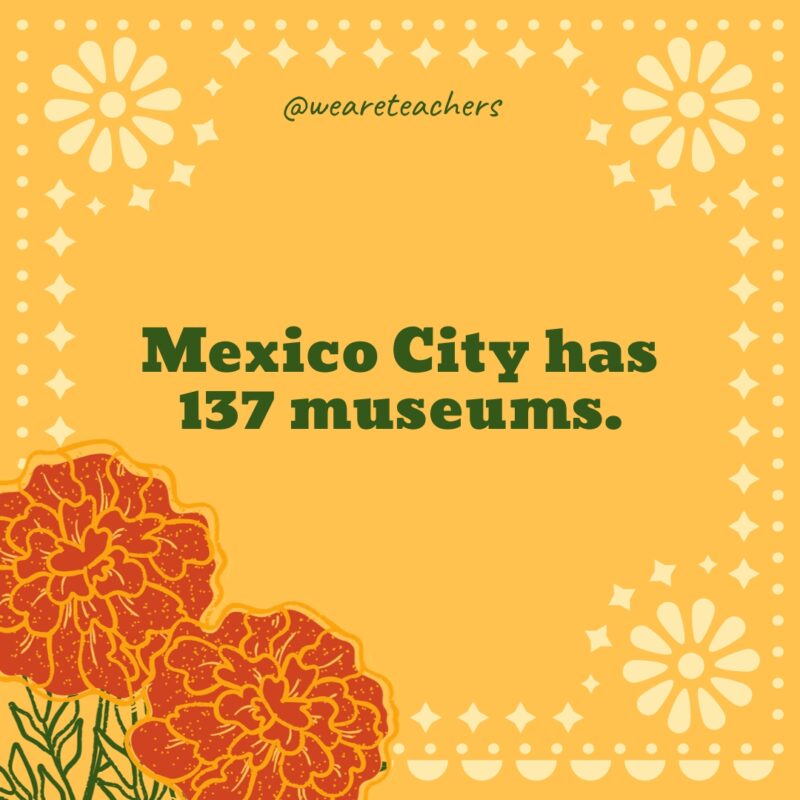
Mexico City has museums for Aztec constructions, art, and more. The only city with more museums is London (it has 200).
19. Mexico has the most taxicabs in the world.
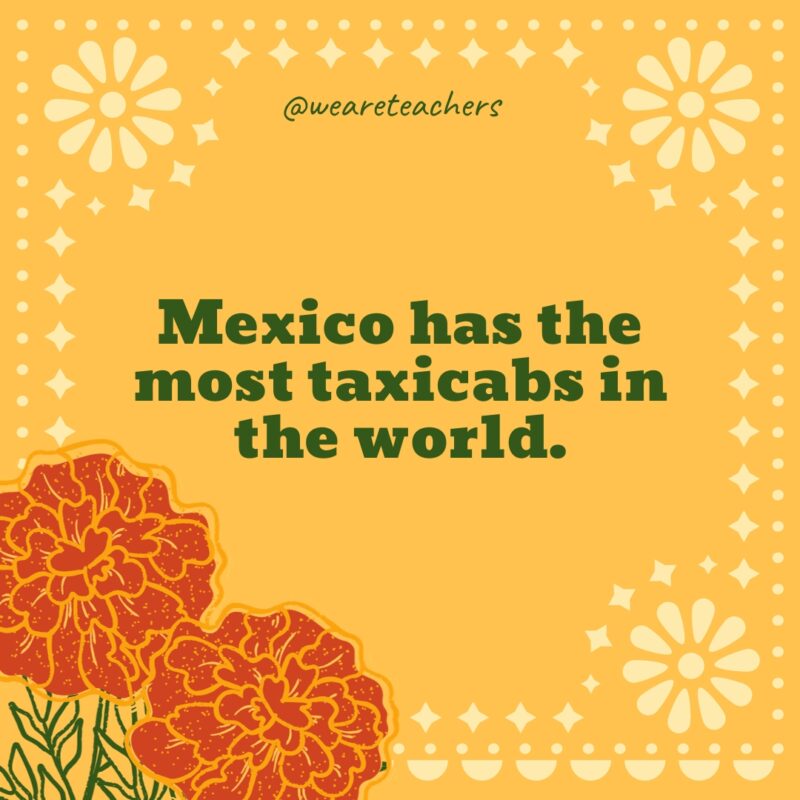
There are 60,000 registered taxis in Mexico. Most of them are in Mexico City.
20. Mexico City sinks 12 cm each year.
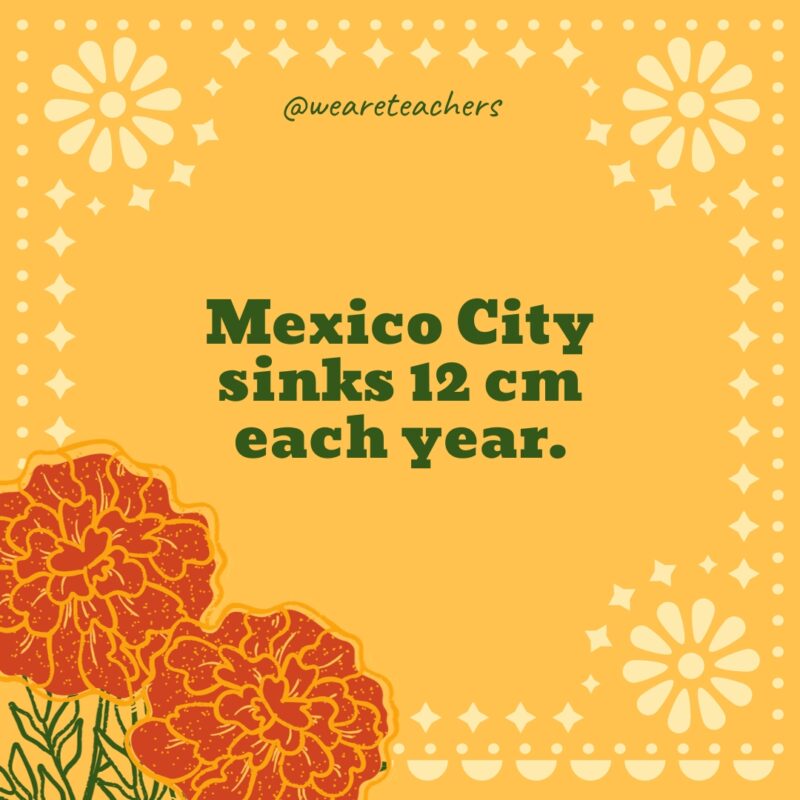
The city was built on Lake Texcoco. It’s dry now, but some buildings are constantly sinking about 12 cm each year. That’s more than Venice, which sinks 2 mm per year.
21. Mexico City was built over an ancient city.
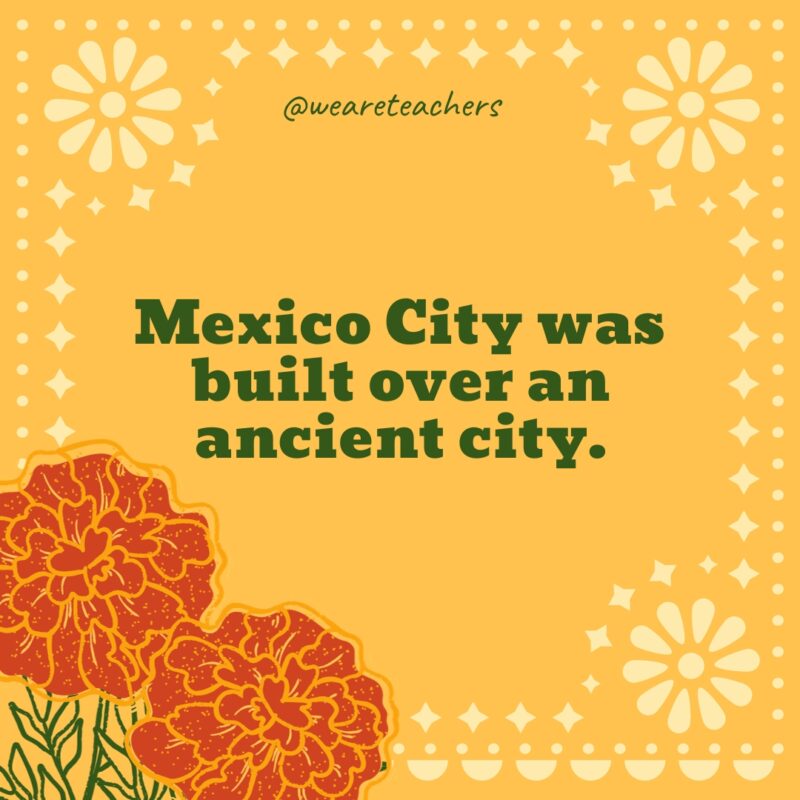
Tenochtitlan was an ancient city that was destroyed by conquistador Hernán Cortés. It’s a city that has been inhabited continuously since 1524. Today, you can see the ruins of Templo Mayor, a sacred area surrounded by a wall decorated with images of serpents, in the heart of Mexico City.
22. Mexico has 35 UNESCO World Heritage Sites.
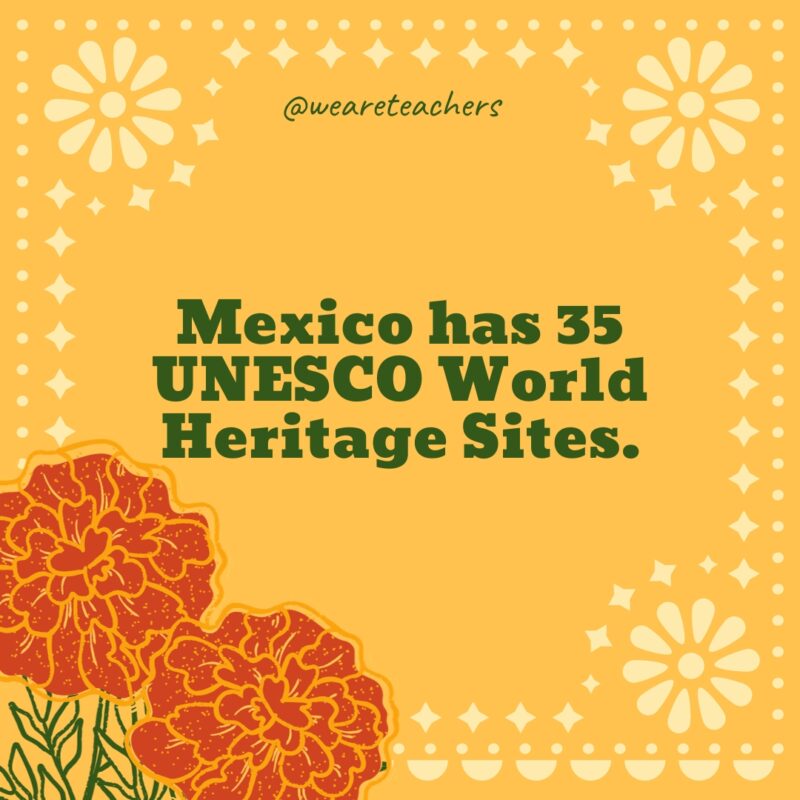
Mexico ranks seventh worldwide for the number of heritage sites. World Heritage Sites in Mexico include:
- Historic Centre of Mexico City and Xochimilco
- Historic Centre of Puebla
- Historic Town of Guanajuato
- Pre-Hispanic City and National Park of Palenque
- Pre-Hispanic City of Chichen-Itza
- Pre-Hispanic City of Teotihuacan
23. Mexico City has the world’s second-largest subway system.
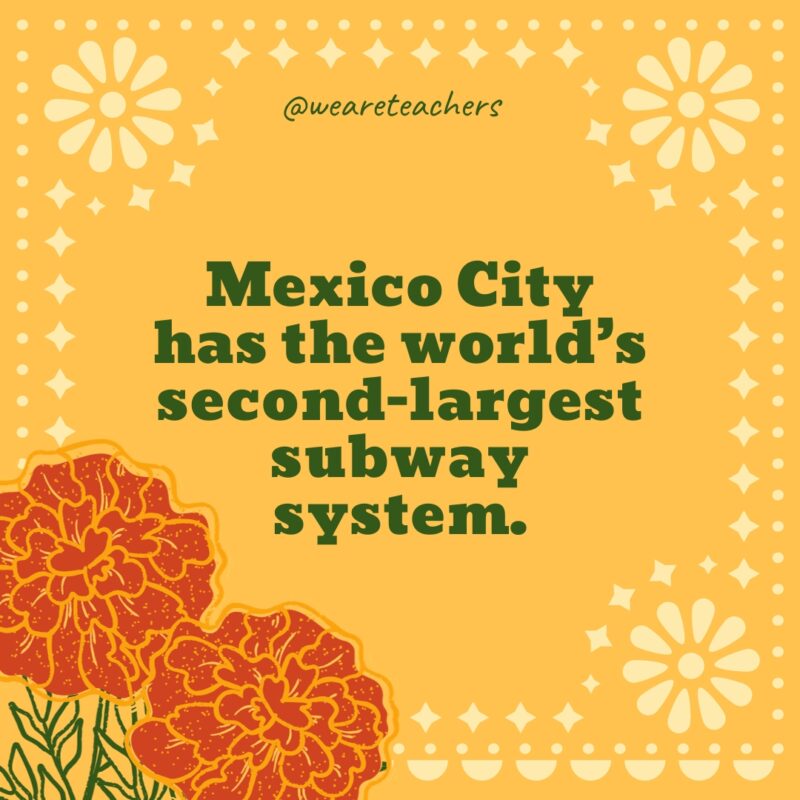
Tokyo is first, Mexico City is second. Their subway system is 142 km long and has 182 stations.
24. Mexico’s El Chepe train took 60 years to complete.
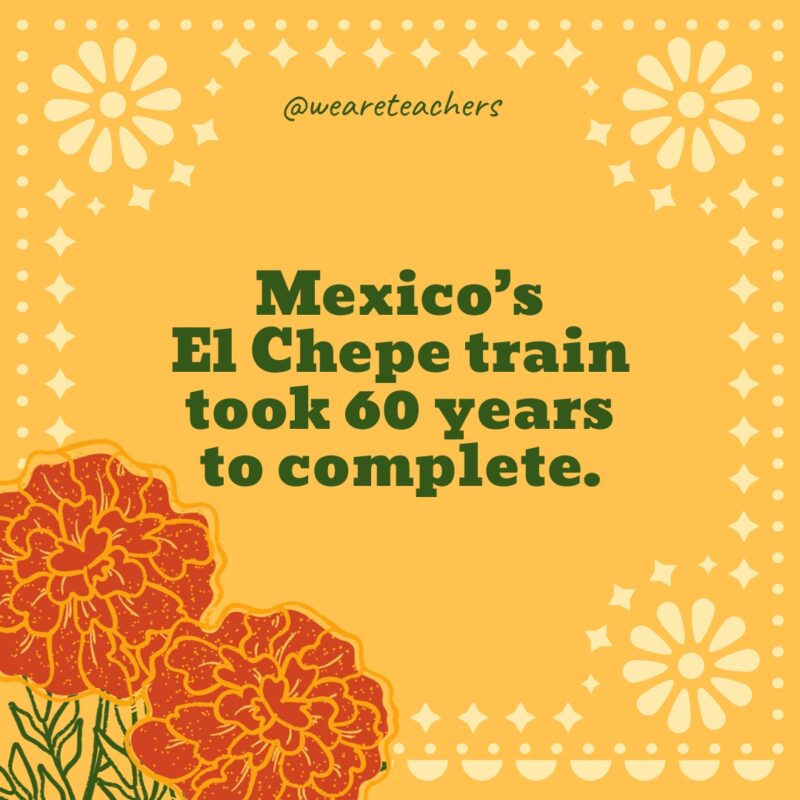
The El Chepe train crosses the state of Chihuahua and continues across the Copper Canyon to the ocean. It has 656 km of track, 37 bridges, and 86 tunnels. Here’s a video of the El Chepe train.
25. Mexico has the most bullrings in the world.
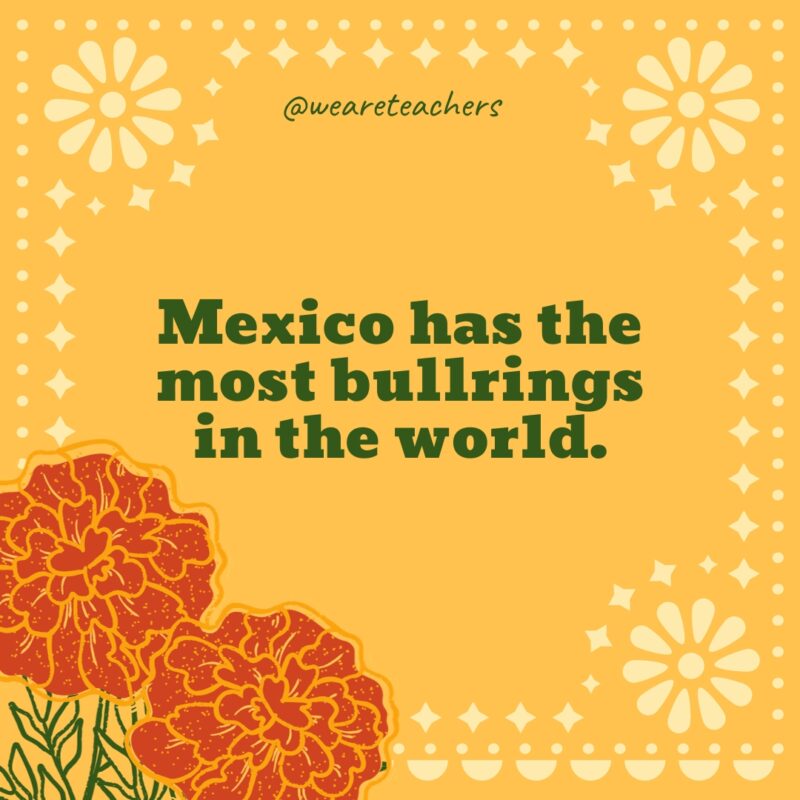
Spain is known for bullfighting, but Mexico has the most bullrings in the world. It has 225 in total.
26. Some of Mexico’s lakes are pink.
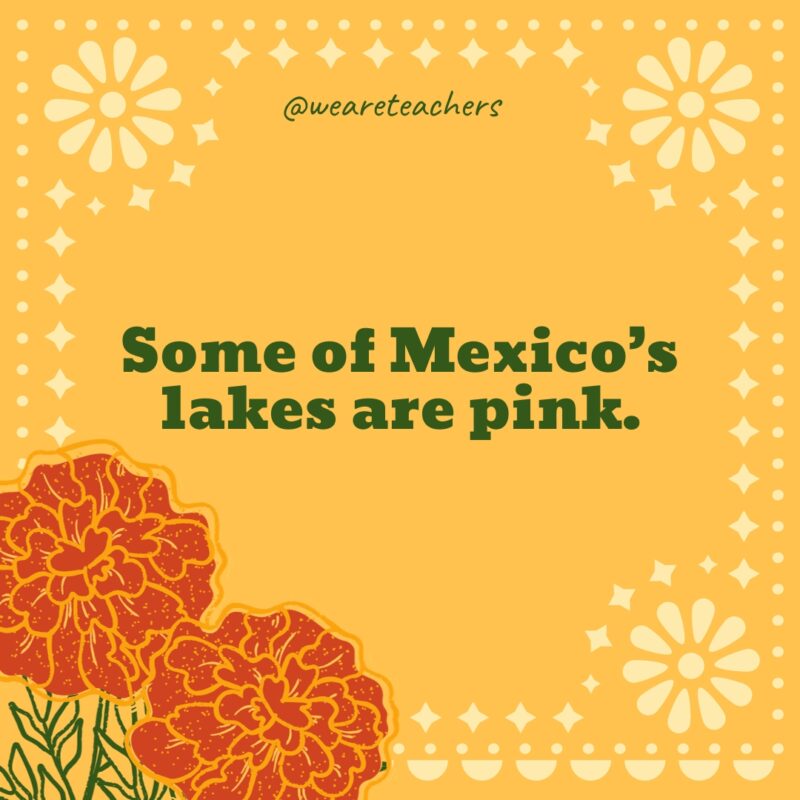
Las Coloradas, the pink lakes, are in the Yucatan Peninsula. They’re colored pink by red algae, plankton, and brine shrimp.
27. Mexico has more visitors than any other Latin American country.
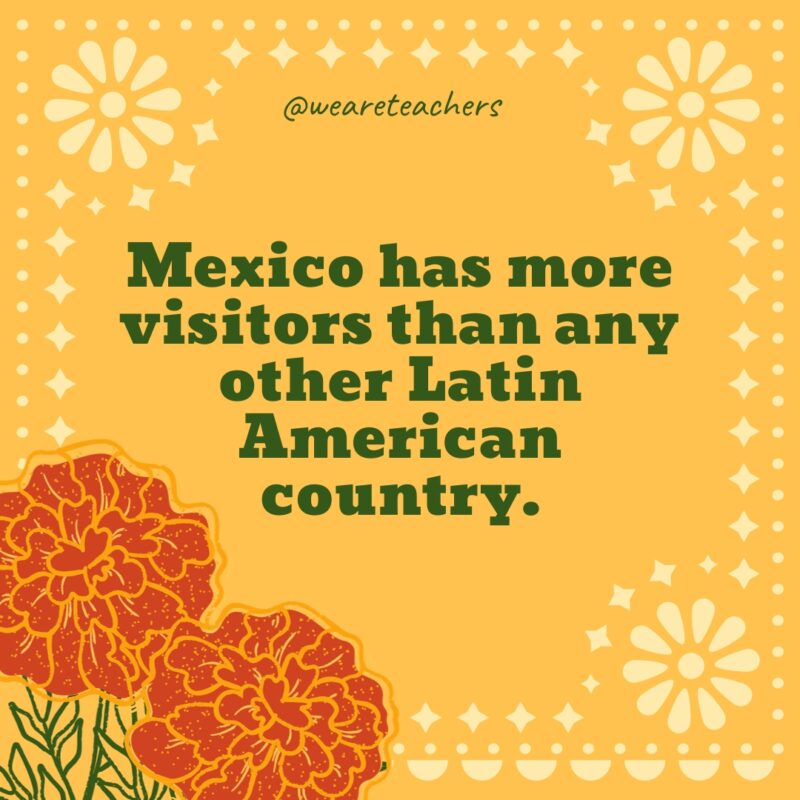
Mexico is the third-most-visited country in the world.
28. Mexico has the only official castle in North America.
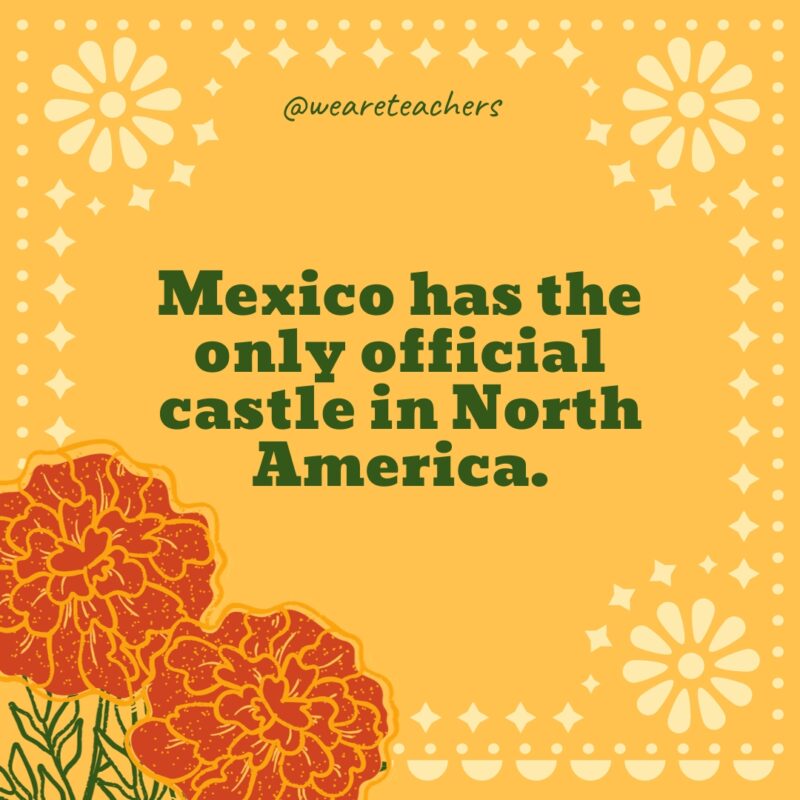
Castillo Chapultepec in Mexico City is the only true castle in North America. Emperor Maximilian I and Empress Carlota lived in the castle. Here’s a video tour of the castle.
Facts About Food in Mexico
29. Mexicans eat more chocolate than any other country.
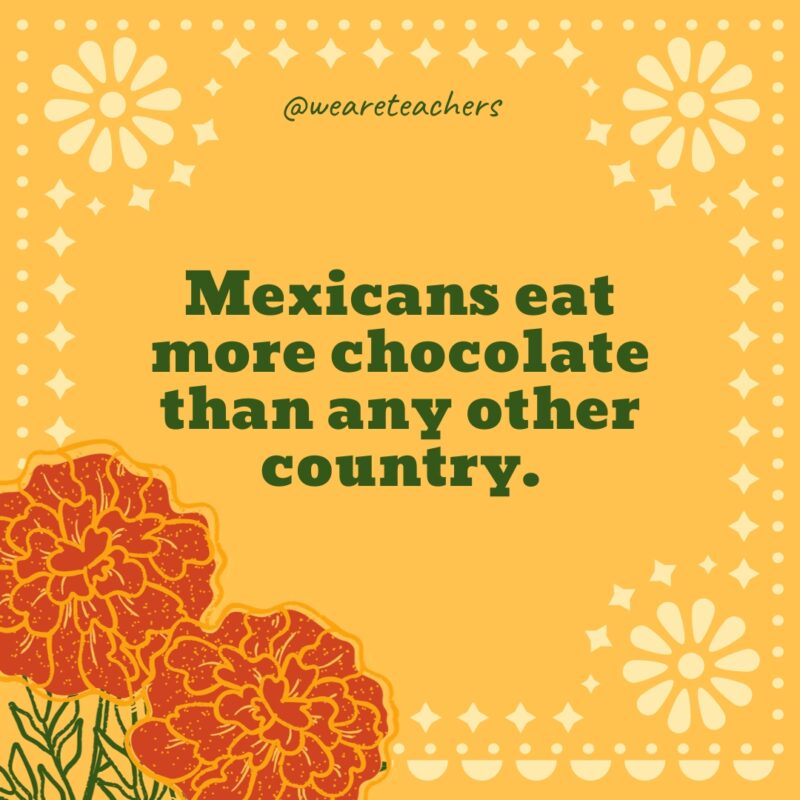
People have been eating chocolate in Mexico since the Olmec, Aztec, and Maya cultivated cacao trees more than 3,000 years ago. Today, Oaxacan chocolate is the best in the country.
30. Mexicans introduced chocolate to Europe.
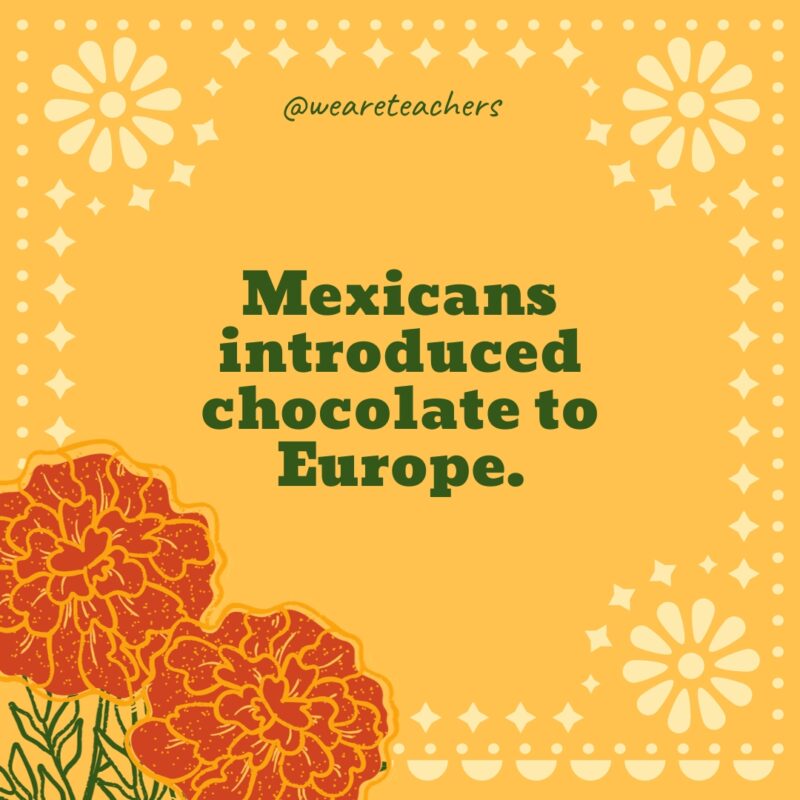
Specifically, Hernán Cortés brought chocolate from Mexico to Spain. The treat quickly became popular all over Europe.
31. There are 60 types of bananas grown in Mexico.
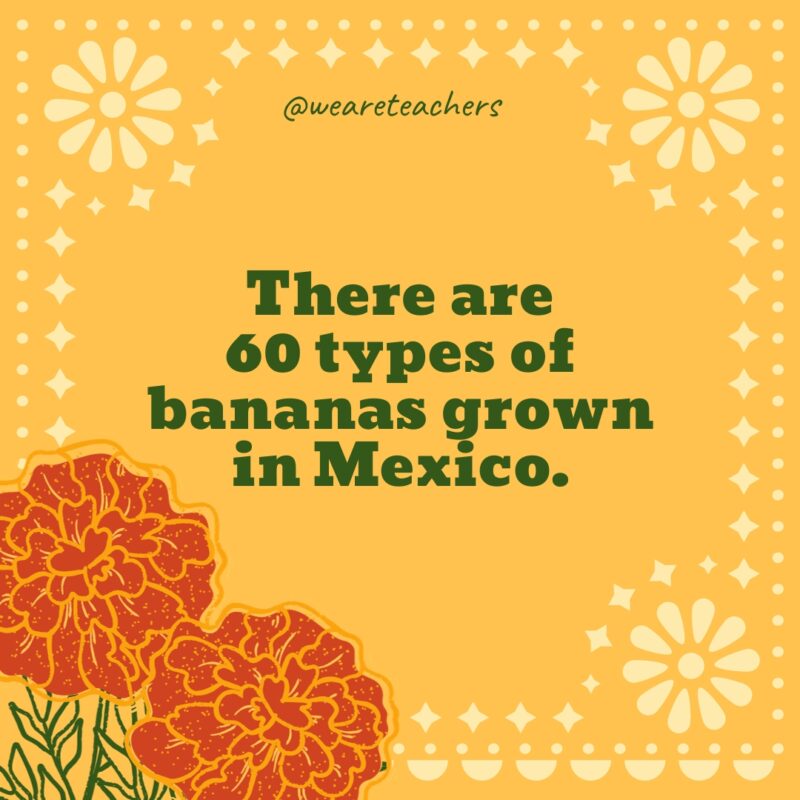
And that’s just the start. Mexico has lots of different fruit and produces almost half the pineapples eaten around the world.
32. Mexico has 59 corn varieties.
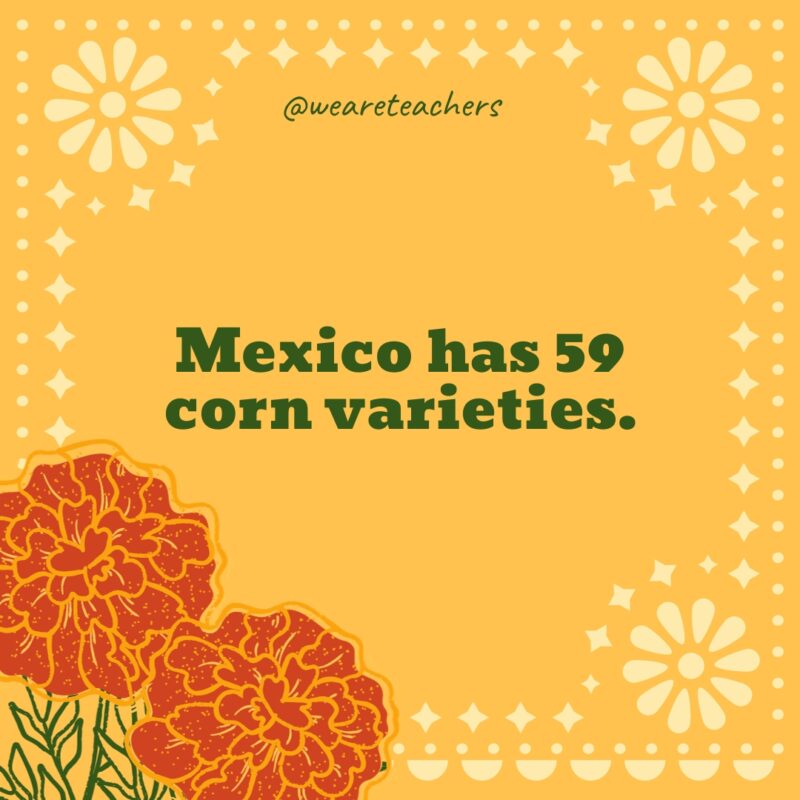
Corn is a food staple in Mexico. There are whole stores that sell nothing but corn—chips, tortillas, kernels. There are 59 varieties of corn in colors from red to blue and green to white. They all come from the same species—teosinte.
33. Mexico is a prolific exporter of tomatoes.
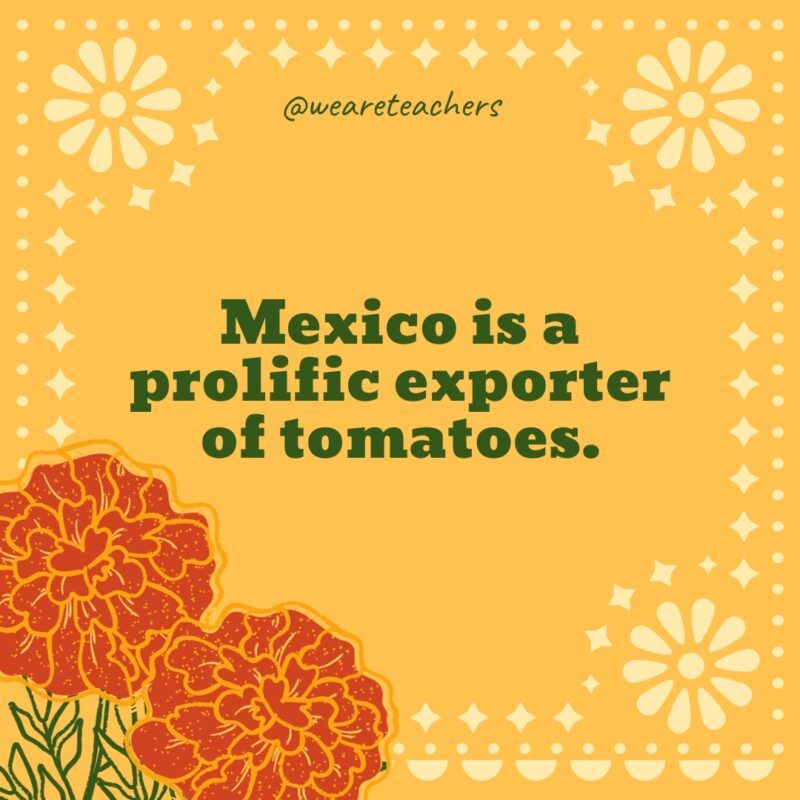
Hernán Cortés brought tomatoes from Mexico to Europe in 1519.
Facts About People in Mexico
34. Mexico is home to more Spanish speakers than any other country.
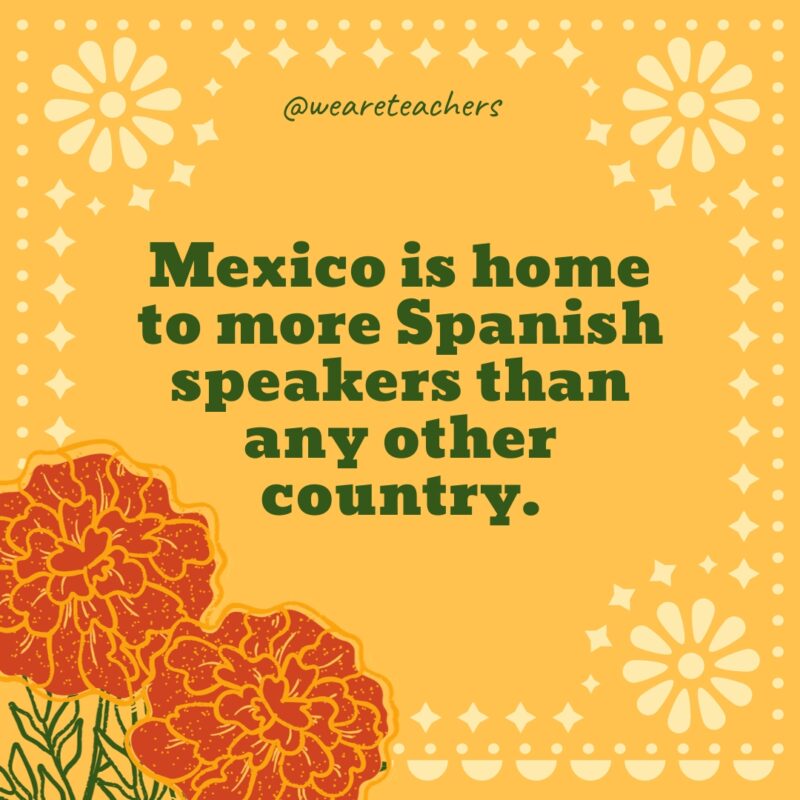
Sixty percent of Mexicans speak Spanish as their first language, so there are more than 67 million people who speak Spanish in Mexico. That’s half of the world’s Spanish-speaking population.
35. There are 69 different languages spoken in Mexico.
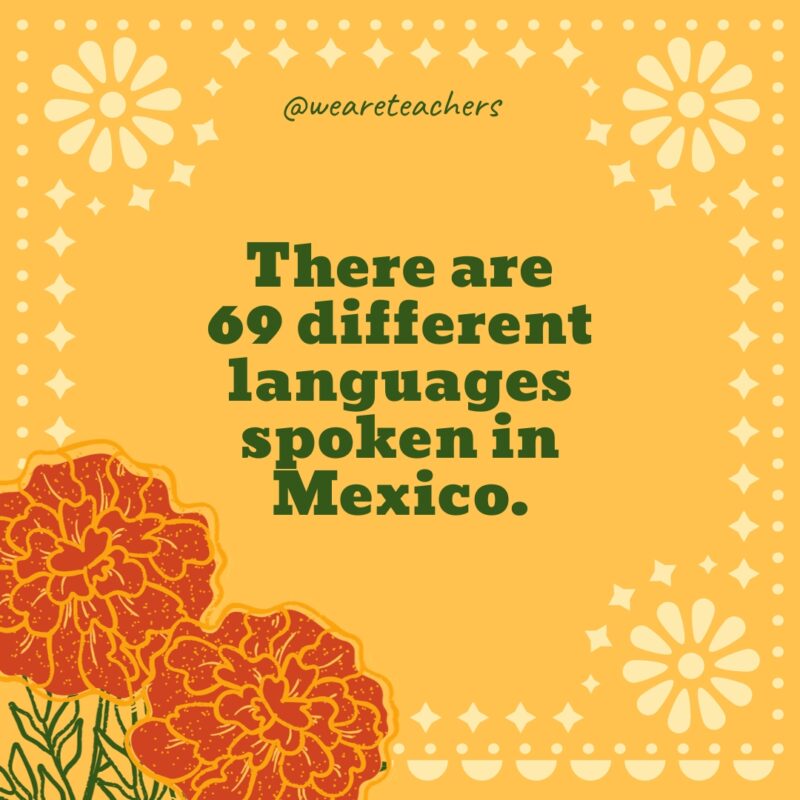
In addition to Spanish, there are 68 indigenous languages, including náhuatl, mixteco, and otomí. Mexico has some of the richest linguistic diversity of any country. Perhaps that’s why Mexico has no official language.
36. There is a festival in Mexico every week.
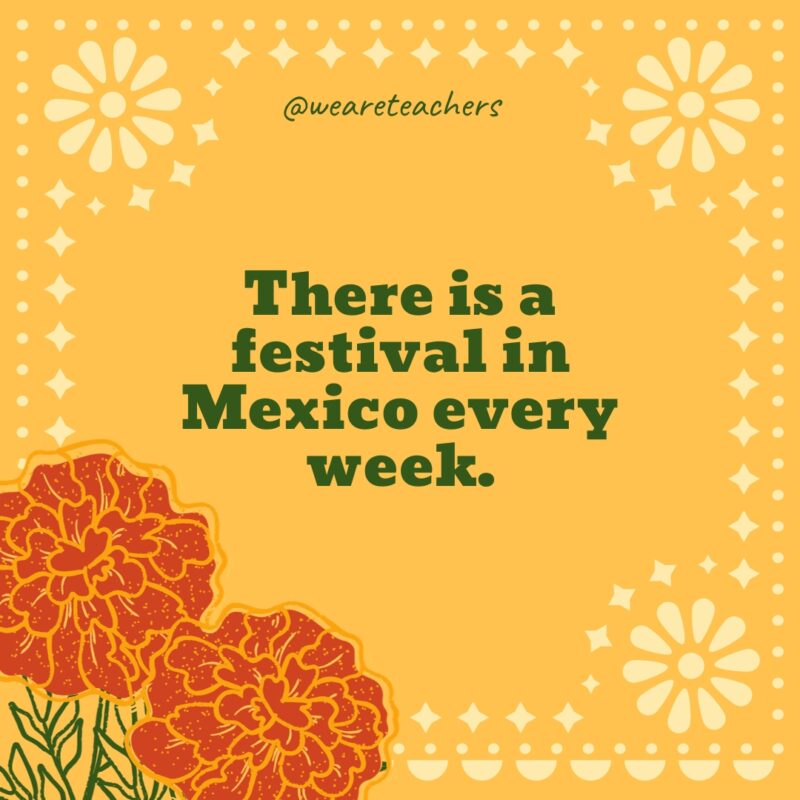
There are the major Mexican holidays, like Independence Day, Christmas, Easter, and those celebrating many saints and important Mexican figures. The biggest festival is Día de los Muertos (Day of the Dead), which takes place every year on November 1 or 2. Here’s a video about Día de los Muertos.
37. Mexico has won more Olympic gold medals for boxing than any other country.
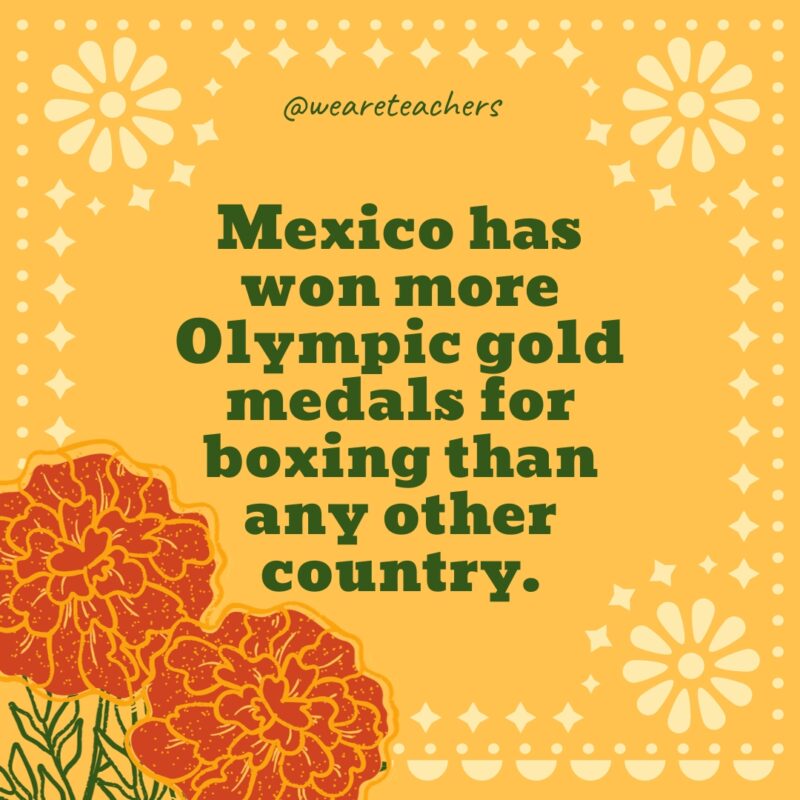
Mexico won its first boxing gold medal in 1968 and has held on to the number-one spot ever since.
38. Frida Kahlo is Mexico’s most famous artist.
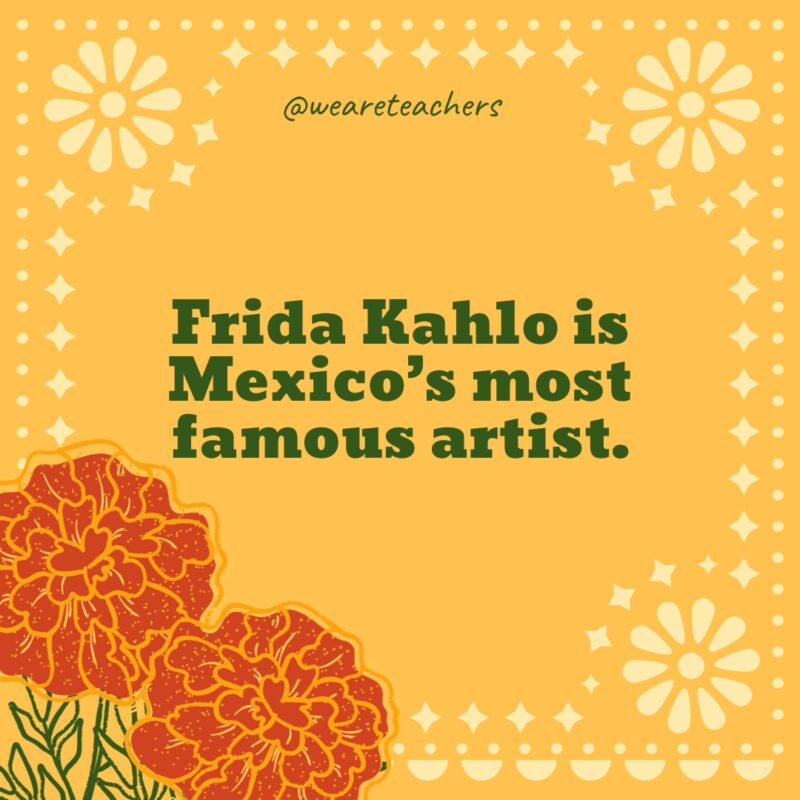
Frida Kahlo is well known for her art works, which often feature an autobiographical element and mix realism and fantasy. In Mexico, Frida Kahlo is a national heroine. Watch this biography of Frida Kahlo for kids.
Facts About Mexican History
39. The meteorite that killed the dinosaurs struck Mexico.
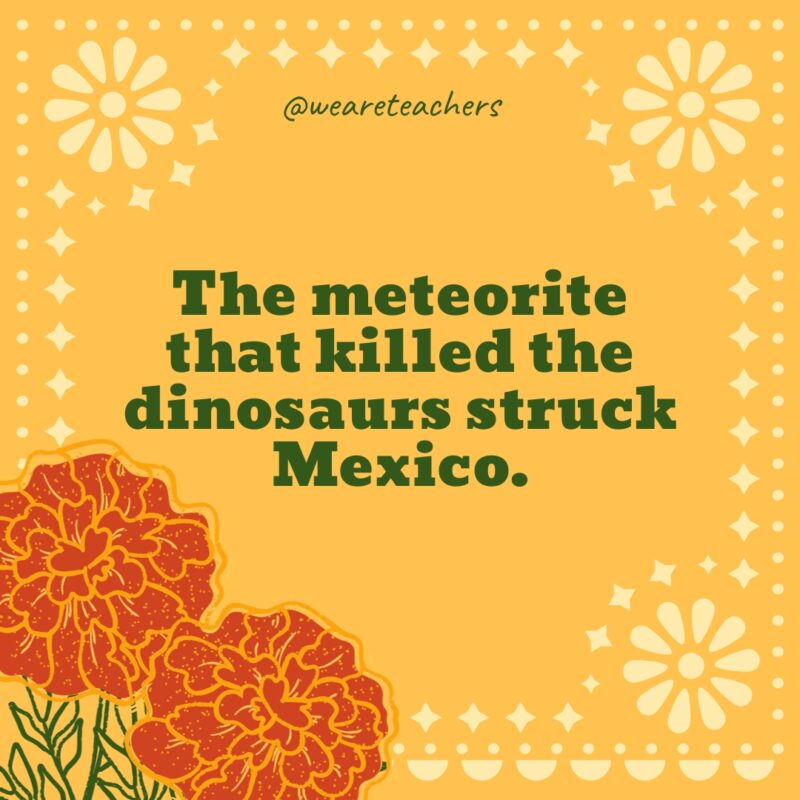
Sixty-five million years ago, a meteorite struck the globe and killed the dinosaurs. It hit the Mexican Yucatan Peninsula. In 1981, employees from the Pemex oil company found its crater while digging for oil. Here’s a video about it.
40. A Mexican invented color TV.
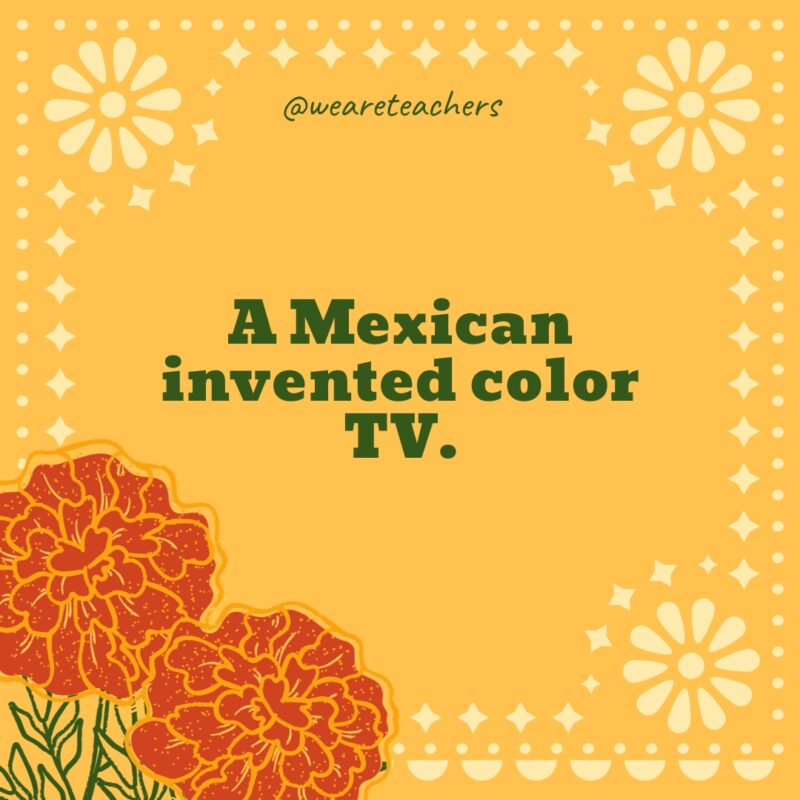
Guillermo Gonzalez Camarena invented the color TV. He was born in Guadalajara, Jalisco, in 1940.
41. Mexico was the first place in America where books were printed.
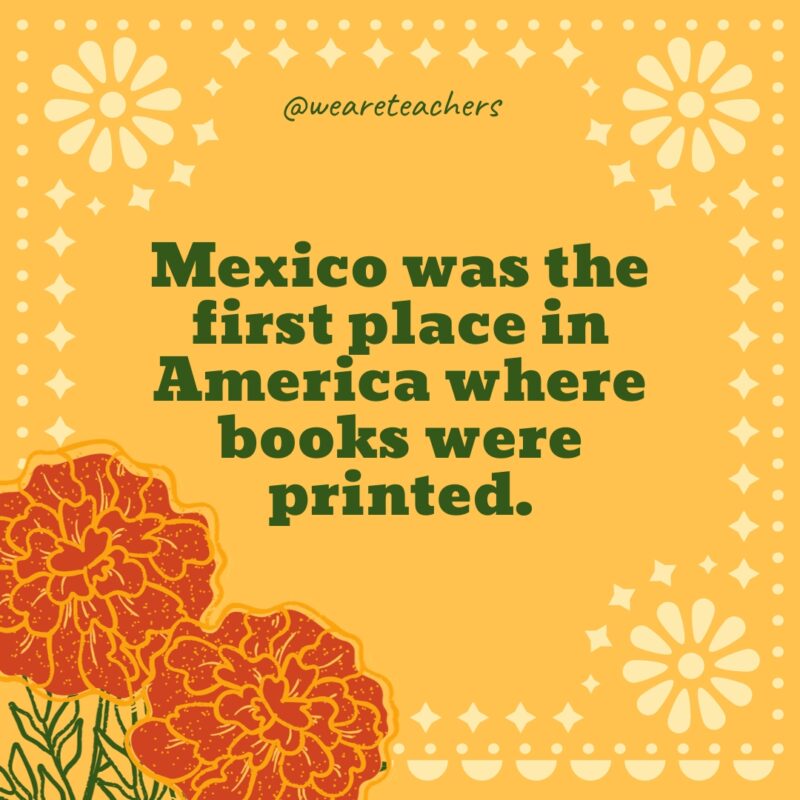
The first printing press in the Americas was in Mexico City in 1539 in the Casa de la Primera Imprenta de America, or the House of the First Printing Press. The house published books.
Facts About Mexican Geography
42. Mexico has seven different climatic zones.
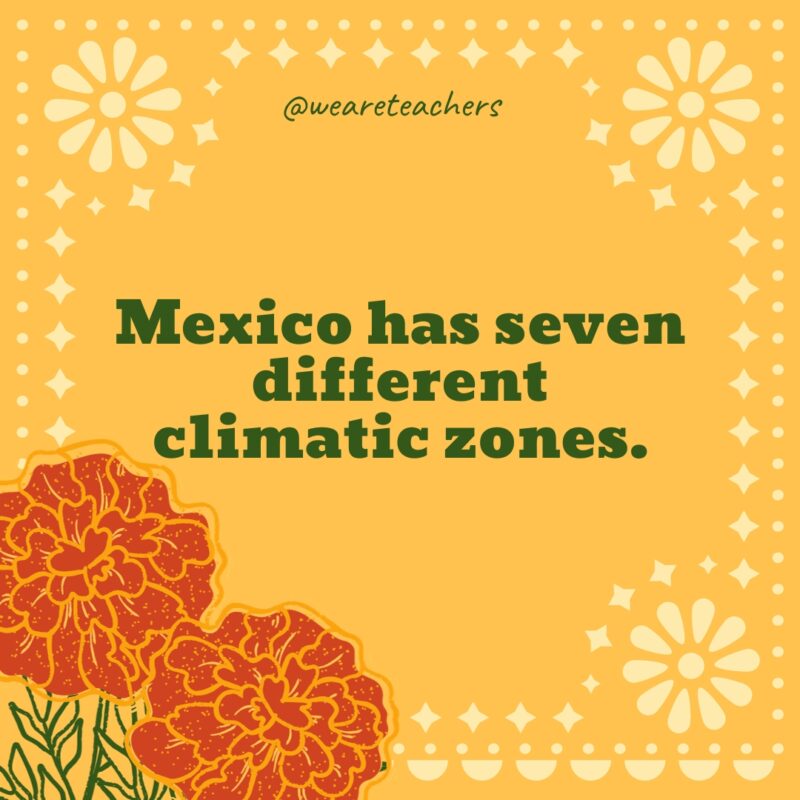
The different zones make for a wide range of ecosystems, from cloud forests to lakes, lagoons, waterfalls, desert, and coral reefs.
43. The second-largest canyon in North America is in Mexico.
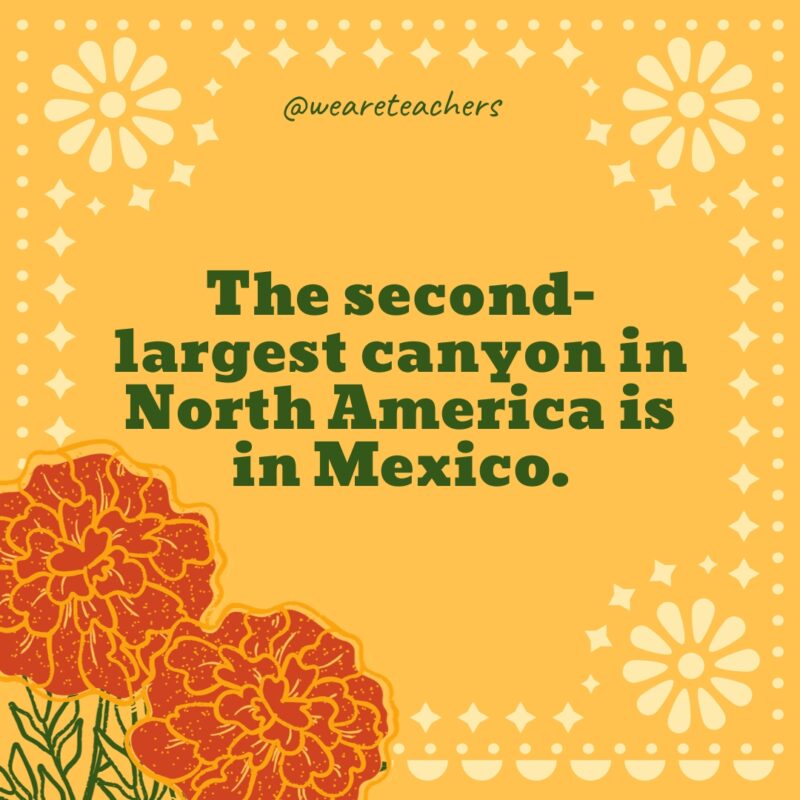
The Barranca del Cobre, or Copper Canyon, is a region in the desert of northwest Mexico with the second-largest canyon in the world. It’s actually 20 canyons formed by six rivers. (It’s even larger than the Grand Canyon and with different topography, flora, and fauna.) The Tarahumara, descendants of the Aztecs, still live in the canyon.
44. Mexico has almost 7,000 miles of coastline.
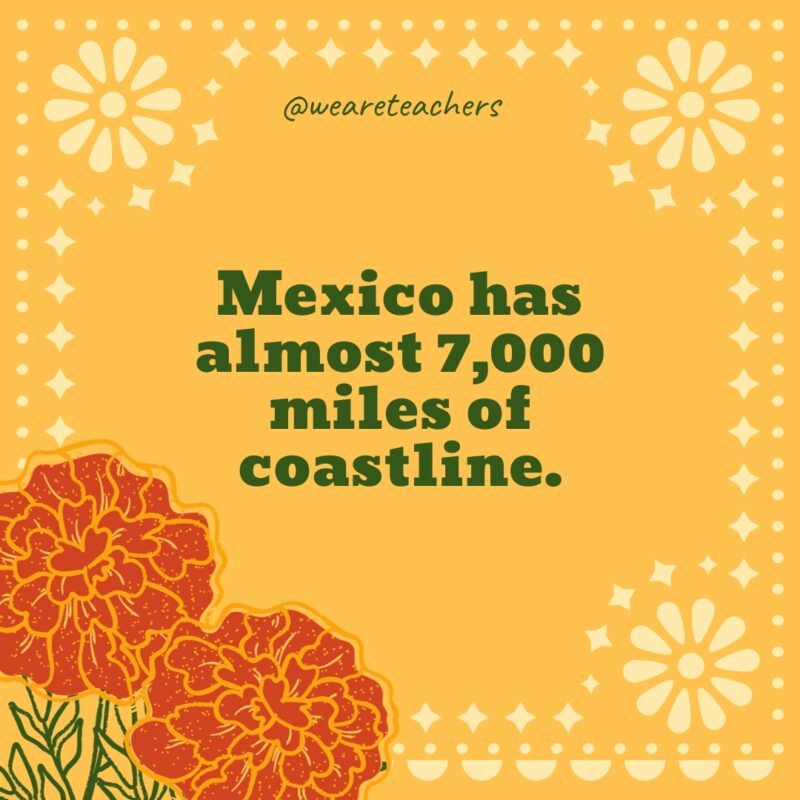
It has more coastline than land borders. It also borders the Pacific Ocean, Caribbean Sea, Gulf of Mexico, Sea of Cortez, Bay of Campeche, and more.
45. Mexico has one of the only blowholes on Earth.
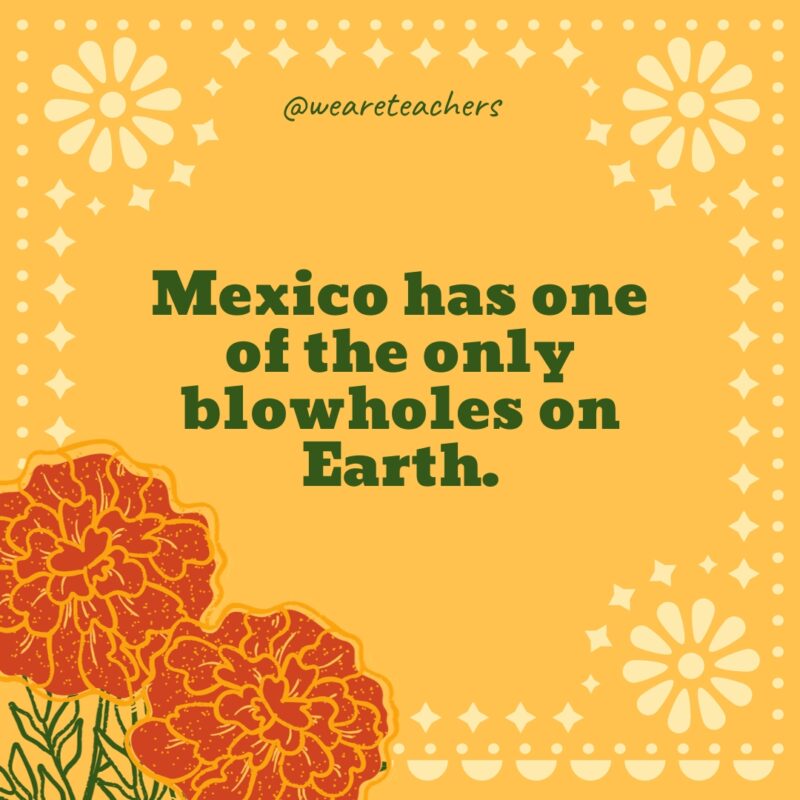
La Bufadora is a geyser that shoots water 100 feet into the air every 15 to 20 seconds all day and night. It’s outside Ensenada on the Baja Peninsula. Here’s a video of La Bufadora.
